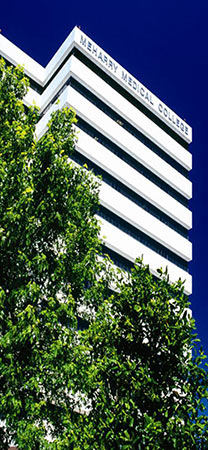Old Challenges, New Successes (1981-2002, Section 2)
In 1948, researchers from Howard University observed that only 200 African-American students entered medical school annually, and most attended two schools – Howard University College of Medicine in Washington, D. C. and Meharry Medical College in Nashville, Tennessee. By 1971, some 83% of the 6,000 African-American physicians in the country had been trained at Howard or Meharry. Studies also revealed that these doctors were more likely to care for members of the black community, which, like most minority communities in the United States, received less than adequate medical care compared to other population segments.
In 1983, a new study explored minority gains in medical education following the increased integration of the nation’s medical schools in the 1960s and 1970s. Between 1968 and 1983, the number of underrepresented racial minorities grew from 854 to 5,544. Although these figures represented a gross increase in the number of minority medical students, the growth was slow and incremental. The percentage of minority students still failed to match minority percentages within the U.S. population. 1
Consequently, African-Americans remained underrepresented among health professionals at the national level and in most areas of the country.” 2 As the 1980s came to a close, African-Americans were 11.7 percent of the nation’s population, but comprised only 3 percent of its physicians. Like their predecessors, these black doctors were much more likely than white physicians to practice in underserved communities. 3
Nonetheless, given the black doctors’ relatively small numbers, African-Americans remained a perpetually underserved constituency in the United States. Even in the twenty-first century, disparities in medical treatment persist. For example, some 22 percent of the country’s physicians accounted for 80 percent of the visits by black Medicare beneficiaries; black doctors were predominant in this group. These physicians also were more likely to report difficulties in obtaining access for their patients to high-quality specialist and diagnostic services. 4
The reasons for the under-representation of African-Americans in the ranks of physicians are complex and historical. First, among many reasons, it takes time to overcome the cumulative impacts of decades of discrimination. Many minority students lack access to adequate educational opportunities at the elementary, secondary, and undergraduate education levels to prepare for the rigors of medical school. Indeed, many, albeit not all, African-American physicians in the last twenty-five years come from families firmly rooted in the black middle class.
Nonetheless, medical schools in the United States remained committed to the recruitment, admittance, and training of qualified minority candidates for reasons of equity, but also because minority health care providers continue to practice in underserved communities. Moreover, once admitted to medical school, minority students progressed toward graduation at relatively the same rate as all students.
In the last two decades of the twentieth century, ambitious, talented young African-Americans broke through social barriers and other obstacles to pursue medical education and to serve the greater good. Many headed to Houston because of the opportunities afforded by the world-renowned Texas Medical Center.
In the Bayou City, they joined the ranks of a vibrant African-American medical community. Some had studied at Howard or Meharry, but others were alumnae of medical schools across Texas and the United States. These physicians had competed for and completed residencies in the nation’s best programs, including, among others, the Mayo Clinic, Harvard, Emory, and the University of Texas.
Dr. Kevin Kendall is a native Houstonian who embraced these new opportunities. He developed a fascination with the field of medicine at an early age, and to help realize his dream, enrolled in Houston’s High School for Health Professionals in 1980. Established seven years earlier, this school was the first of its kind in the nation. Dr. Kendall later graduated from Baylor University where he majored in biology. He completed medical school in 1994 at the University of Texas Health Science Center at San Antonio where he also completed a residency in internal medicine. He practices in the Houston area.
Citations
- Johnson, Davis Gilman. United States Medical Students, 1950-2000: A Companion Factbook for Physicians in the Making (Washington, D.C.: Associations of American Medical Colleges, 1983).
- Location Patterns of Minority and Other Health Professionals, U.S. Department of Health &Human Services, DHHS Publication No. HRS-P-OD 85-2 (Washington, D.C., 1985).
- Minority Students in Medical Education: Facts and Figures IV, Association of American Medical Colleges (Washington, D.C., 1988).
- David Barron Smith, “Eliminating Disparities in Treatment and the Struggle to End Desegregation,” Commonwealth Fund pub. No. 775 (August 2005); and P.B. Bach, et al., “Primary Care Physicians who Treat Blacks and Whites, “ New England Journal of Medicine 351 (August 5, 2004).


